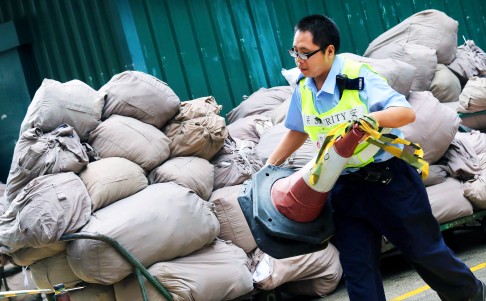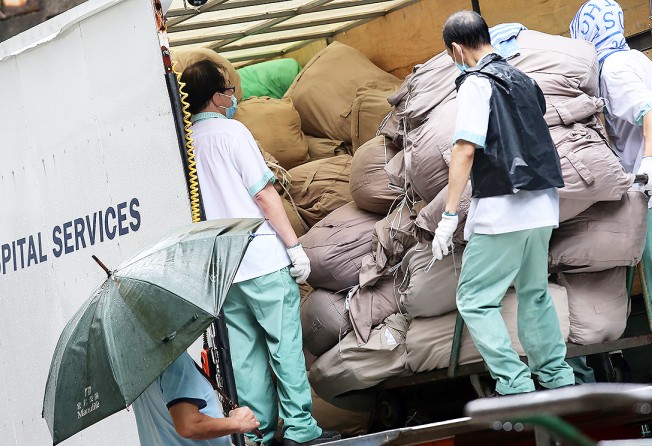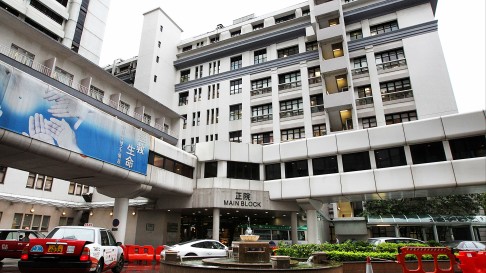
Probe under way after fungal-infected bed linen at Queen Mary Hospital linked to two patient deaths
Laundry services suspended as panel is set up to investigate how fungal outbreak struck down five Queen Mary patients, two of whom died

More than a dozen public hospitals have stopped using a laundry service that supplied infected linen to Queen Mary Hospital, where a panel was set up yesterday to investigate a fungal outbreak that could be linked to the deaths of two patients.
The action was taken after half the linen samples from Sham Wan Laundry were found to contain rhizopus microsporus, a fungus normally found in soil and decaying food. The laundry, run by contractor ISS to whom the washing work was outsourced, supplied bed sheets and clothes to 14 public hospitals and a clinic in Sai Ying Pun, health authorities said.
Queen Mary's hospital environment itself was given the all-clear after samples were tested.
The Hospital Authority yesterday set up a panel to investigate how five patients became infected with nosocomial mucormycosis - caused by the fungus - in the past two months at Queen Mary in Pok Fu Lam. All of them were said to have weak immune systems, and two of them died - a 74-year-old man who had undergone a liver transplant on the mainland and a woman aged 42 who was suffering from lung disease.
In the case of the elderly patient, who had a lung infection as well, doctors later found the skin around the tube inserted into his chest had decayed as the fungus attacked blood vessels and blocked oxygen flow.
The fungal infection is rare and Hong Kong usually reports one or two such cases a year.

The linen at 11 wards housing high-risk patients, such as those who have just received organ transplants or suffer from uncontrolled diabetes, had already been replaced, while supplies from Shum Wan were suspended pending a clean-up at the laundry.
"There are various possibilities … The temperature of the washing, the dryer and ironing," Yuen said, adding that in particular corn starch used on the linen would also be tested.
In 2009 a drug for treating gout was found to have been tainted by the same fungus - and linked to several patients who died at the same hospital.
"Corn starch was used in making the pill Allopurinol," Yuen recalled.
But another microbiologist from HKU, Dr Ho Pak-leung, suspected the growth of the fungus could be due to storage problems. "Humidity facilitates the growth of fungus … Did the laundry encounter any water seepage on rainy days before?" he asked.

Some visitors to the hospital looked worried yesterday by news of the outbreak.
"To be ill or weak is bad enough, but to be ill and have to face the infection makes everything even worse," said an elderly woman who was visiting a friend.
"Hospitals have a duty to keep their clothes and floors clean. Why is it so unhygienic in the first place?"
But others seemed unconcerned. "The hospital will be able to manage these things properly," said Chiu Sin-ho, 40, whose daughter was undergoing surgery.